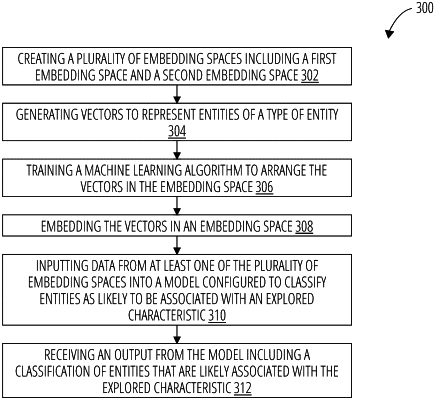| CPC G06F 16/285 (2019.01) [G06F 16/9024 (2019.01); G06N 20/00 (2019.01)] | 17 Claims |

|
1. A method for classifying different types of social network entities that are likely to be associated with social network content indicative of a characteristic based on vector data from a plurality of embedding spaces each with arrangements of vectors representing social network entities of a shared entity type, the method comprising:
creating, by a first machine-learning model that arranges certain vectors representing social network entities that are similar closer together than other vectors representing social network entities that are less similar, a plurality of embedding spaces including vectors representing social network entities of a first shared entity type in a first embedding space and vectors representing social network entities of a second shared entity type in a second embedding space, wherein arrangement of respective vectors in the first embedding space is based on references in related social network entities represented by respective vectors of the second embedding space, wherein the first shared entity type and the second shared entity type co-exist in a social graph;
inputting vector data from the first embedding space and vector data from the second embedding space into a second machine-learning model configured to relate the plurality of social network entities of the first entity type to the plurality of social network entities of the second entity type to classify respective social network entities as likely to be associated with social network content indicative of a characteristic; and
receiving an output from the second machine-learning model including a classification of entities that are likely associated with the social network content indicative of the characteristic.
|